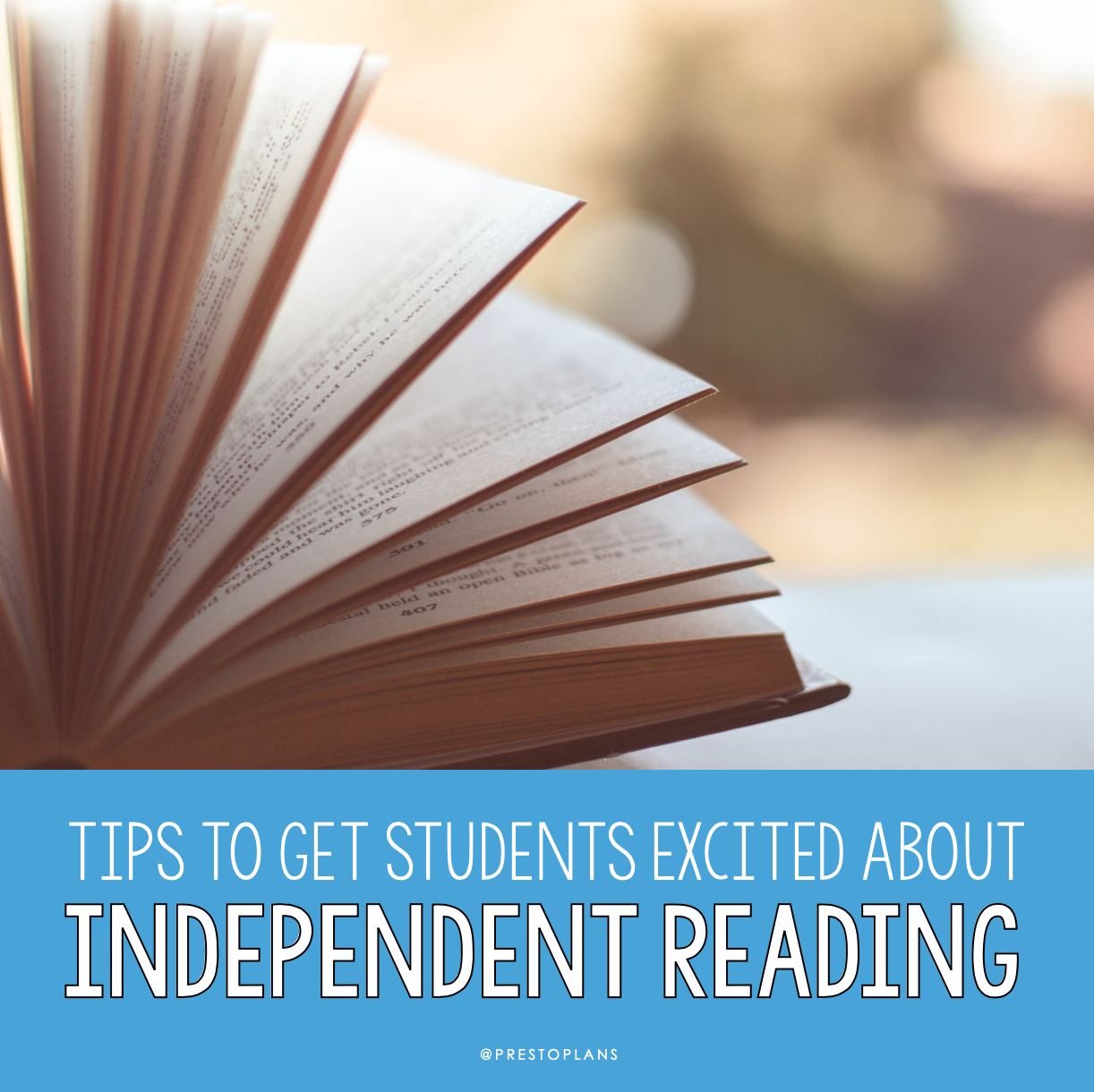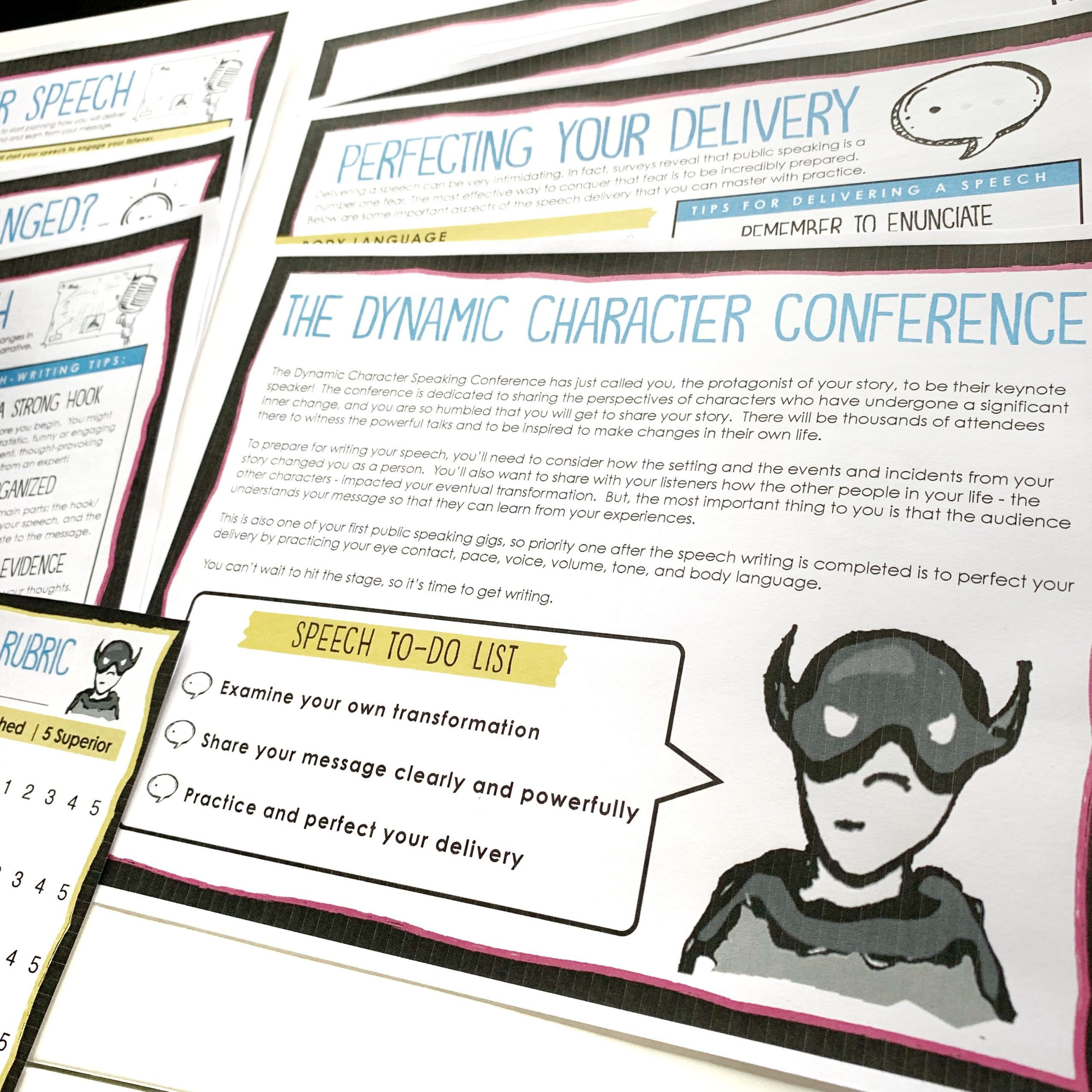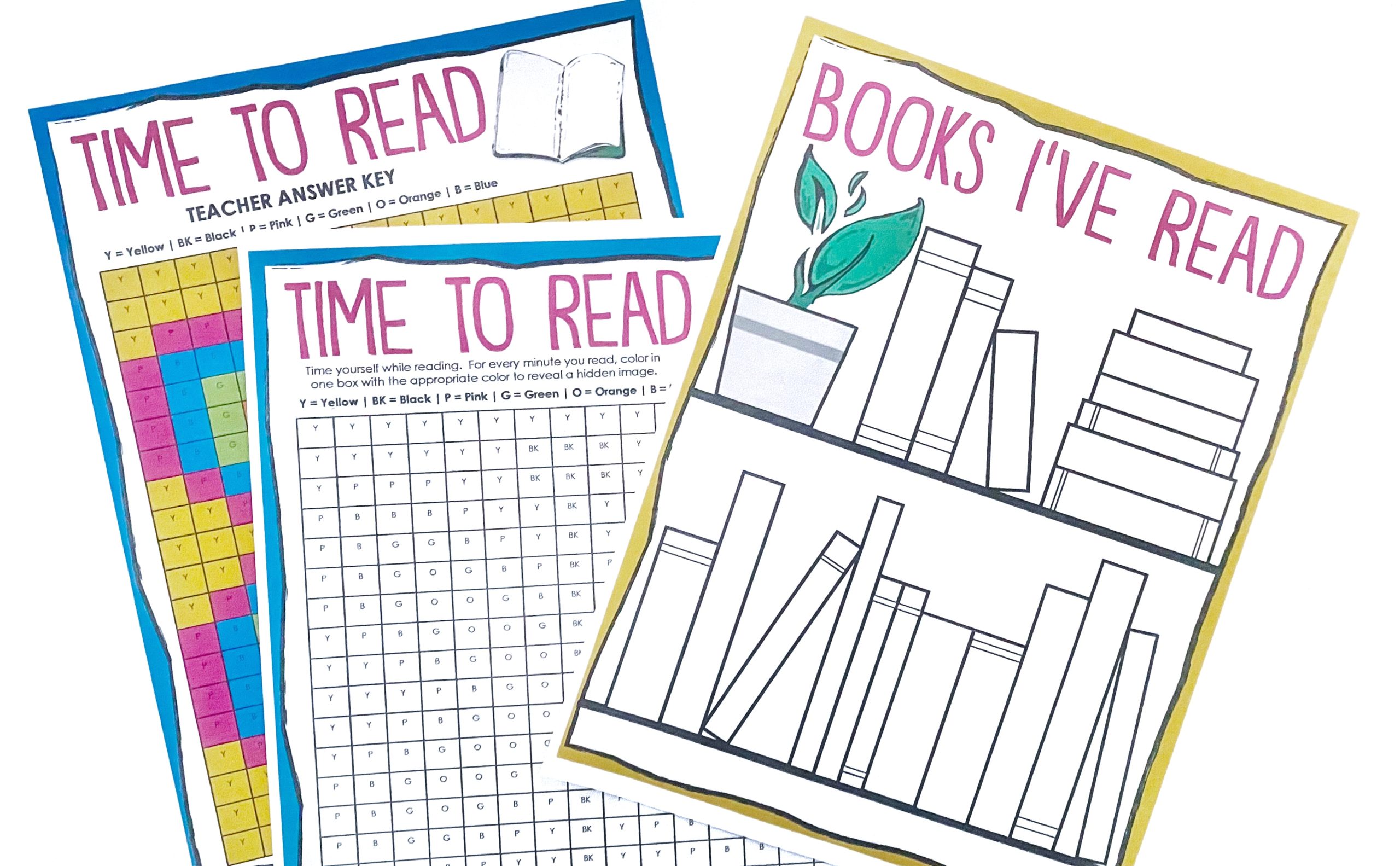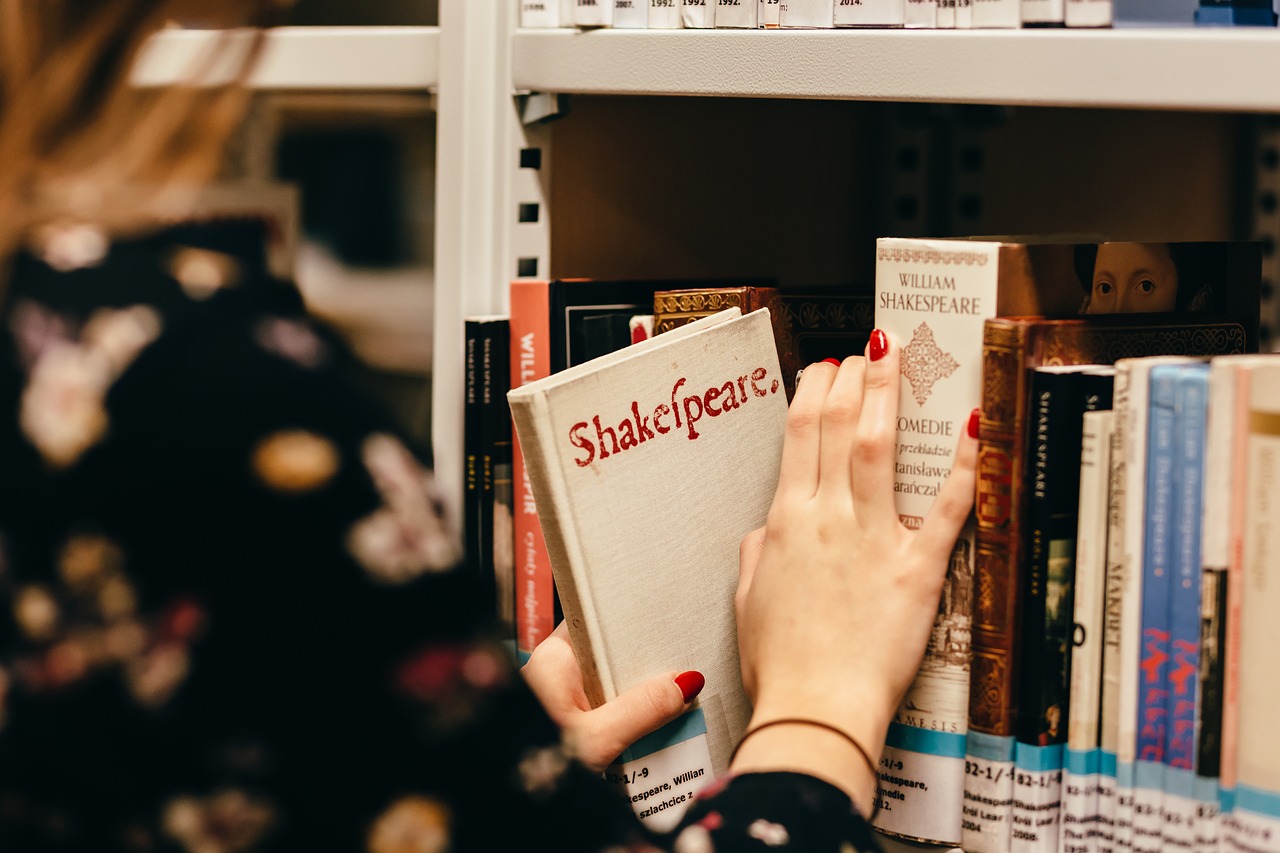PRESTO PLANS
Sent straight to your inbox
CLICK HERE TO ACCESS
Sign up to receive 10 ready-to-use ELA resources your students will love!
10 FREE ELA RESOURCES

Tips for Getting Students Excited About Independent Reading
Getting all of our students to sit silently at their desks, undistracted, and honestly engaged in independent reading can feel like wishful thinking at times. As English teachers, we quickly learn to be realistic with our expectations for silent reading. Some students come to class with a love of books while other students couldn’t be bothered. But, wouldn’t it be great if all of our students developed an ability to really immerse themselves in a text—to lose themselves in the act of reading? Over the years in the ELA classroom, I’ve developed practical tips for getting students excited about independent reading. Here are some ideas that you can bring to your middle or high school classroom right away.
You might also want to check out Empowered Readers, a comprehensive course for giving students ownership over their own reading.
Classroom Flexible Seating
Chances are that when you are reading a book for pleasure, you are not sitting rigidly at a desk. If that was the case, you might start to look at reading differently than you do now. It’s important to keep this in mind when it comes to independent reading in your classroom. Being flexible with seating location is a simple way that you can make reading a more enjoyable experience for your students. Try giving your students more choice with regards to where they will sit during silent reading time.
I like to let students know they can move around and get themselves comfortable. They are free to sit on the floor, in the hallway, or wherever else they want to sit, so long as they are not distracting anyone else. In terms of locations, you might also consider bringing students to different environments for silent reading. You might have it in the classroom one day but then go to the theatre, the cafeteria, or even outside on other days. Sometimes changing locations makes reading more of an adventure that students enjoy.
Give More Time
In early middle school, I was an avid reader, and if I had a new Babysitter’s Club book, you could not get me to put it down! I recall that in my English class, we started the period with 5 minutes of silent reading. While I loved that reading was built into the day, I remember feeling frustrated every day when we had to put our books away, and I had barely made it through a chapter. The short increments really didn’t allow me to enjoy the reading process as much as I could have with more time.
When you sit down to read a book, you likely don’t read for 5 minutes at a time. Keep this in mind and consider giving your students more time to dive into their books. If you do decide to extend silent reading time in your classroom, you might want to build up to it by, say, starting at 5 minutes, then moving up to 10, 15, etc. You might be thinking that even getting some students to sit and read for 10 minutes is like pulling teeth. In that case, they probably just haven’t found the right book, which leads me to my next suggestion!
Teacher Book Talks
Book talks are short informal speeches that are used with the purpose of persuading others to read a book. You might want to use book talks to get students to find a book that is truly interesting to them. This could be book talks that students give or a book talk that you present yourself on something that you are currently reading!
You might even have other teachers, the librarian, or other people from the community come in and give book talks. The point of this is not only to widen our students’ senses of the reading material they can choose from but also to demonstrate some real-world passion and excitement for reading.
If you haven’t yet, be sure to check out the Empowered Readers course which comes with creative book talk resources and so much more.
Celebrations & Tracking
I’ve found that competitions don’t mix well with independent reading. It is not an equitable playing field; in any given class, there will be some students who already possess more reading skills than others. Because of this, it can be a good idea to do celebrations on a group—instead of individual—level. For example, if the whole class can read a certain number of books, there will be a collective reward. I like to get students tracking their reading visually so that they can see their achievements reflected in a more tangible way.
Book Recommendations
You can help students find strong book recommendations with online tools like What should I read next? This is a website that gives you book recommendations according to your preferences of genre other books you’ve enjoyed. I’ve used this in the past and it works well! Likewise provides a similar service and this one comes as an app you can download on your phone. You can use both of these for free; they’re definitely worth checking out!
ALL Reading Counts
Regardless of whether your students are listening to an audiobook while reading, reading a graphic novel, or even reading a magazine, they are still reading, and that’s the most important thing. I like to approach independent reading with the mindset that all reading counts.
Even if what they are reading doesn’t seem like an ideal choice to you, it’s usually best not to discourage them from reading it. Otherwise, they might not read at all. If a student wants to read the driver’s manual, let them! So long as they are engaged in the material, it will improve their reading skills.
Ditch the Grades
Another one of my tips for getting students excited about independent reading is to ditch the grades! The more students associate reading with grades, the more they will look at it negatively—like it is some kind of chore instead of something pleasurable. We don’t want to kill the love of reading in students. You can still give them reading-related assignments or projects, but students shouldn’t be evaluated every time they sit down to read.
Ownership of the Classroom Library
My last suggestion for getting students excited about independent reading is to give them ownership over the classroom library. You can allow students to take part in the process of setting up the library itself; they can separate the books into genres, for example. You can also put the onus on them to create the rules around the classroom library. This helps students recognize that the library is for them!
You should also try to add some diversity to your classroom library. Think “mirrors and windows.” According to Emily Style, a text that is a “mirror” reflects your own culture and identity. A “window,” on the other hand, allows you to view and consider someone else’s experience. It’s important for students to encounter books that are both “mirrors” and books that are “windows” for them in the classroom library.
We talk more about this in our Empowered Readers course. Click the image below to learn more.
I hope these tips help you get your students excited about independent reading!
In another post, I give my best tips for teaching close reading. You can read that by clicking here.
Search the blog for what you are teaching
GIVEAWAYS
sent straight to your inbox!





share this post